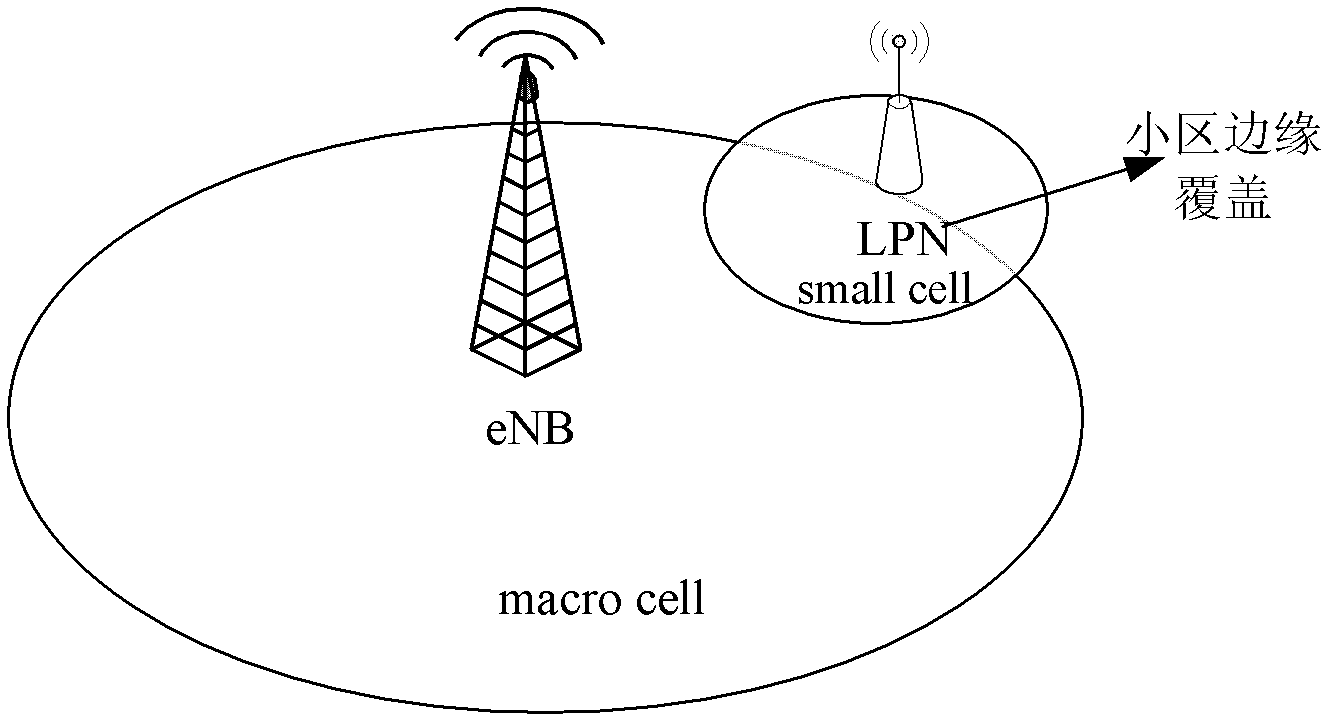Measurement processing method and system
A technology of neighbor cell measurement and measurement report, which is applied in the field of mobile communication and can solve the problem of low transmission power of low-power nodes
- Summary
- Abstract
- Description
- Claims
- Application Information
AI Technical Summary
Problems solved by technology
Method used
Image
Examples
Embodiment 1
[0130] Such as Figure 9 As shown in the schematic diagram of network coverage, the UE has established an RRC connection in the macro cell, and within the coverage of the macro cell, two small cells with the same frequency as the macro cell are deployed, namely small cell 1 and small cell 2. The base station to which the macro cell belongs can obtain the location information of each small cell within its coverage area through OAM (Operation Administration and Maintenance), or through the interface between the macro base station and the LPN where the small cell is located. In this embodiment, the value of the measurement parameter S-measure configured by the current macro base station for the UE is S-measure1.
[0131] In order to detect in time the Figure 9 For the small cells shown, in this embodiment, the macro base station uses the location information of each small cell to configure a small cell detection event for the UE, that is, the macro base station can know the loc...
Embodiment 2
[0155] Such as Figure 10 As shown in the schematic diagram of network coverage, the UE has established an RRC connection in the macro cell (working frequency f1), and within the coverage of the macro cell, two small cells with different frequencies from the macro cell (working frequency f1) are deployed. is f2), which are small cell 3 and small cell 4 respectively. The base station to which the macro cell belongs can obtain the location information of each small cell within its coverage area through the OAM or through the interface between the macro base station and the LPN where the small cell is located. In this embodiment, the value of the measurement parameter S-measure configured by the current macro base station for the UE is S-measure1.
[0156] In order to detect in time the Figure 10 For the small cells shown, in this embodiment, the macro base station configures a small cell detection event for the UE by using the location of each small cell.
[0157] Specifical...
Embodiment 3
[0181] In this embodiment, when the operator allocates frequency resources, some frequency resources are specially reserved for the deployment of LPNs. On these specially reserved frequency resources, only LPNs are deployed, and macro base stations are not deployed. These frequency resources are referred to herein as LPN dedicated frequency resources, that is, all small cells work on dedicated frequency resources.
[0182] The UE has established an RRC connection in the macro cell. In order to detect the small cell in time, in this embodiment, the macro base station configures the measurement parameters on the LPN dedicated frequency for the UE. Specifically, once the UE establishes an RRC connection in the macro base station, the macro base station can provide The UE configures the measurement parameters on the LPN dedicated frequency;
[0183] The measurement of the dedicated frequency by the UE is not restricted by the S-measure, that is, when the UE measures the neighborin...
PUM
 Login to View More
Login to View More Abstract
Description
Claims
Application Information
 Login to View More
Login to View More - R&D
- Intellectual Property
- Life Sciences
- Materials
- Tech Scout
- Unparalleled Data Quality
- Higher Quality Content
- 60% Fewer Hallucinations
Browse by: Latest US Patents, China's latest patents, Technical Efficacy Thesaurus, Application Domain, Technology Topic, Popular Technical Reports.
© 2025 PatSnap. All rights reserved.Legal|Privacy policy|Modern Slavery Act Transparency Statement|Sitemap|About US| Contact US: help@patsnap.com



